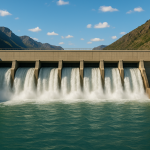
Pentagon: US Strikes Delay Iran Nuclear by Up to Two Years
A recent Pentagon update revealed that U.S. and allied strikes on Iranian nuclear facilities in June have set back Tehran’s atomic programme by between one and two years, a significant increase from earlier estimates.
Revised Timeline for Iran’s Nuclear Capability
In a press briefing, Pentagon spokesperson Sean Parnell stated the programme has been “degraded by one to two years,” with internal intelligence suggesting outcomes are closer to the two-year mark. This reassessment represents a substantial shift from previous estimates that had predicted only a short-term delay of several months.
Previous Conflicting Assessments
Earlier intelligence, including a draft Defense Intelligence Agency report and intercepted Iranian communications, indicated limited damage and modest slowdown. By contrast, the current Pentagon assessment aligns with a concurrent CIA evaluation, reinforcing the conclusion that the strikes inflicted deeper degradation than initially reported.
Details of the Strike Action
The military operation, dubbed Operation Midnight Hammer, involved U.S. B‑2 stealth bombers deploying heavy bunker-busting ordnance against hardened sites at Fordow, Natanz, and Isfahan. Submarine-based Tomahawk missiles also targeted auxiliary installations. Officials later reported widespread structural damage and disruption to critical components like uranium enrichment centrifuges and conversion facilities.
Evaluating Underground Assets
Despite the success of surface-level strikes, significant uncertainty remains about Iran’s capacity to recover. Some infrastructure might be deeply buried or reinforced, and stockpiles or components may have been relocated. Assessing the subterranean damage is an ongoing challenge for intelligence agencies.
Strategic Implications
A delay of up to two years provides the international community a critical window to negotiate and impose further diplomatic or economic constraints. However, the resilience of Iran’s nuclear network and its ability to reconstruct underground facilities may still limit the long-term impact.

















